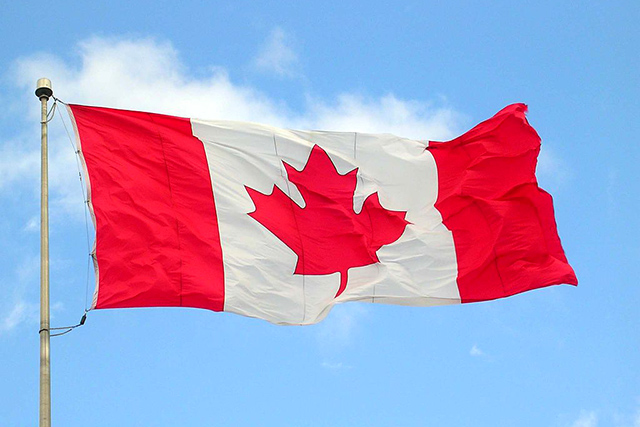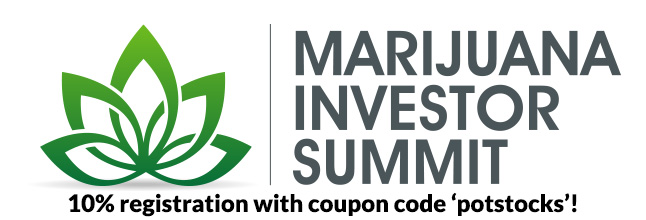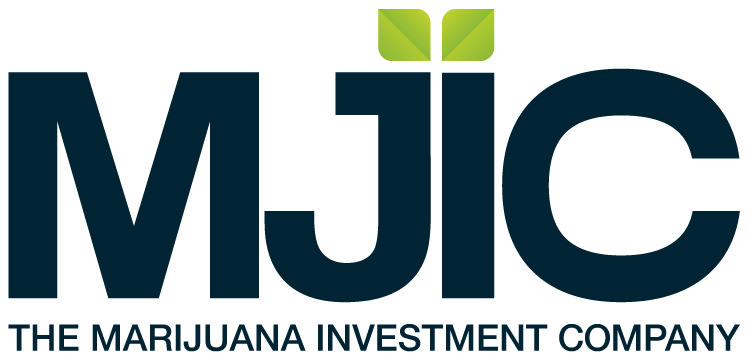Given the thousands of Health Canada applications filed by companies wanting to legitimize their medical marijuana grow operations in Canada and on the OTC: how did the current six publicly traded Canadian government approved cannabis grow-ops get into the OTC market quicker than others? Does a back door process exist, or a minimum monetary requirement for an initial licensed producer application?
To understand Canadian location discrepancies of regulated versus unregulated OTC pot stocks, look at the global market movement of the herbal product and its financing, not just in Canada, but in surrounding regions. Latteno Foods (OTC: LATF) had its company address listed online as Colorado, but changed it to Canada when Canadian regulations shifted in 2015, perhaps due to a newly dominated liberal government leaning toward recreational legalization.
As a potential investor, you may want to know how LATF got listed in Canada on major online stock trading sites based in America, versus a Canadian-approved company, like Organigram (OTCQB: OGRMF) (TSXV: OGI), the only fully organic licensed Canadian producer and OTC-approved federally banked pot stock allowed to grow and distribute marijuana in Canada.
“There is a plan to run and grow the business, and that might differentiate us from others that are basically stock promoters or benefitting from the retail investment interest in marijuana,” said Denis Arsenault, CEO of Organigram Inc., out of New Brunswick Province, one of Health Canada’s newest MMPR licensed grow-ops.
Arsenault explained,
You have to understand the motivation of governments when they affect public policy. In this case it’s to collect taxes. Let’s not confuse ourselves why the policy is going in the direction that it’s going. So we’re very comfortable that the existing framework will be in place and we would speculate or presume that there will be more licenses given out because currently the licensed producers could not possibly supply the market that’s coming with recreational legalization. We don’t anticipate being able to sell product recreationally for probably another 12 to 18 months. And obviously in the interim, we will continue to add production capacity to our facility in order to have a much higher volume permitted out of the gate. Even though it’s marijuana, and it’s going to be a very large industry, investors need to focus on the management of the company. We could be making lights or telephones, it really doesn’t matter. At the end of the day, we happen to be producing marijuana. But as an investor you need to focus on who’s going to have the ability to take their current facilities, which are all facilities that could maybe produce 10 million dollars, and who’s got the capability management wise to increase this capacity and grow their business to sell for a couple hundred million dollars a year. That takes management.
In contrast to Organigram, Latteno Foods claims to invest in cannabis edibles and erectile dysfunction pills as a focal point of the company’s projected growth. So how does the Canadian address approval process differ for OTC companies like OGRMF in Canada versus companies like LATF with apparent operations in Colorado, Canada and Central America, according to multiple websites and addresses listed for the LATF stock?
No readily available way exists to order edible cannabis in Canada on Latteno’s website or phone. Attempts to contact the company via email and phone proved unsuccessful, and the stock has deluged into ranges of <.001 centavos during the day, and <.000001 pennies/share in after-hours trading for long-term periods. LATF hasn’t issued press in months, which may weary investors feeling limp about buying unregulated erection pills and edibles operating in the shadows of OTC’s cash-only pot-stocks of Canada and Colorado.
As happened with Nixon’s cannabis war, LATF may have permanent limp dick on the OTC. But for all we know LATF penile pill underground transactions are blazing, perhaps providing the best edibles to people round the world, maybe even back and forth between Canada and U.S. But when a company like LATF does not answer its phone or emails to provide said erectile dysfunction pills and brownies, you should speculate as to who deals and produces its product, if any product pusher exists at all.
Such is life in the revolutionary pot-stock world and the black markets that exist in part due to current government regulations and systems of collecting high tax percentages on an address-by-address basis, thereby pushing up the legal cannabis price while untaxed black market cannabis often remains cheaper and just as potent, on or off the OTC. According to VICE, as of Oct. 17, 2015, “black-market growers and grey-market marijuana dispensaries are more prevalent than ever.”
One does not have to look too far into Canada to see that even with legalization promises on the horizon, Canadian activists, like Marc Emery of Cannabis Culture magazine in British Columbia, recently released from years in prison for marijuana-related charges, do not agree with the planned system of controlled cannabis cultivation, distribution, regulation and taxation proposed by federal governments that deny rights of outdoor farmers and individuals from propagating their favorite crop.
According to a recent column on Straight.com by Mark Emery, the “Prince of Pot” in Canada,
Legal marijuana won’t need security. Legal marijuana is subject to PST and GST, any other tax would be punitive and prejudicial and immoral. There is virtually no social cost to legalization unlike that of prohibition—the policy of right now—which is incalculably damaging to civil rights, privacy, the price of consumption, dignity, national and local police budgets, families, assets, livelihoods, and our reputation as individuals who use a substance the government has demonized and punished for 50 years. Yet government officials in Vancouver want to ban cannabis edibles from marijuana shops; wipe out cannabis culture lounges; severely restrict the number of cannabis shops; and apply ridiculous and unmerited restrictions to essentially put 90 percent of the current dispensaries out of business, despite that the marijuana consumer market is made up of intelligent, thinking adults who know what they want and who they want to get it from.
In line with Emery’s argument, a 2013 report from the Liberal Party in Canada stated: “To be successful and prevent organized crime from maintaining a black market, the price of legal marijuana must be lower than it is now. At the same time, the product’s quality must be at least as good—if not better.”
The real question lies in how unregulated OTC cannabis companies listed in the U.S., Canada and other prohibited nations still function in the black market cash system, and how do tax and control systems of marijuana distribution by federal governments tie in to the much larger chaos of recreational marijuana sales potential for Canada’s proposed controlled legalization system?
Further, how do OTC cash-only cannabis companies in and out of Canada transfer money and where in the world does it go? Because when paying taxes, the following are some of the most important details: the operation’s location, mailing address, place of business, PO Box, etc., due to distinctive regulations across multiple nations, states and provinces regarding a marijuana establishment’s official operating address, addressee, and/or addresses. More important: how do governments benefit by black market cash-only cannabis systems that control who grows what, how much, and where it gets sold? Look, we all know large amounts of “illegal” cannabis cross American and Canadian borders, and historically have for decades, e.g., “Kid Cannabis,” creating billions of dollars in untaxed cash income for many nonviolent and violent individuals.
The infinite possibilities of where seeds, weeds and cash from hash can go in a state-by-state or province-by-province mapped out zoning approach to marijuana approval of dispensaries and OTC pot stocks with multiple addresses across multiple trading platforms and wire transfer systems via multiple nations may have made a more powerful system for the cash-only black market to launder its money from quasi-legal weed shops running on multiple types of currency, bitcoin and online stock trading regulations.
Until the U.S. opens up the banking system like Canada has done for federally approved OTC cannabis stocks, almost the entire cash trading of pot stocks on the OTC rise and fall on speculation, and for many like the millionaire Mr. Wonderful on ABC’s “Shark Tank,” investing in marijuana remains beyond risky pending the U.S. Treasury opening up banks for business.
So until the “Man” comes to town, you never know what the Man may throw down.
And yes, if the governments of developed nations continue to require limited indoor grows using lights, air conditioners and high taxes—as developing nations legalize unlimited outdoor propagation of cannabis on cheaper land with cheaper labor via sun and start regulating cannabis like other crops, permitting importing and exporting similar to hops, corn, sugarcane, etc.— then the black market will thrive in places like the U.S. and Canada as cheaper, yet just as potent, cannabis enters the streets at a more affordable price from tropical locales, thereby altering the demand for weed from approved and more expensive regulated dealers, with both sides equal in capacity to produce top quality flowers.
Walls will fall as the Man stands tall. Standing high while governments sow and stall; Mon frère, the royal seed wars call.









